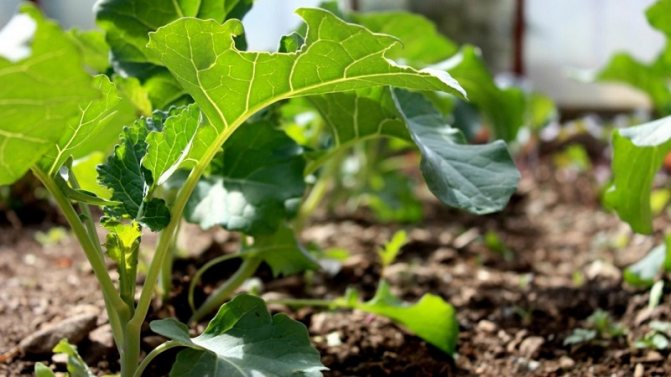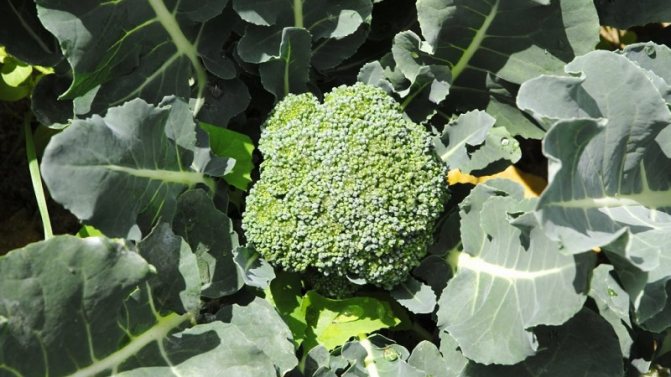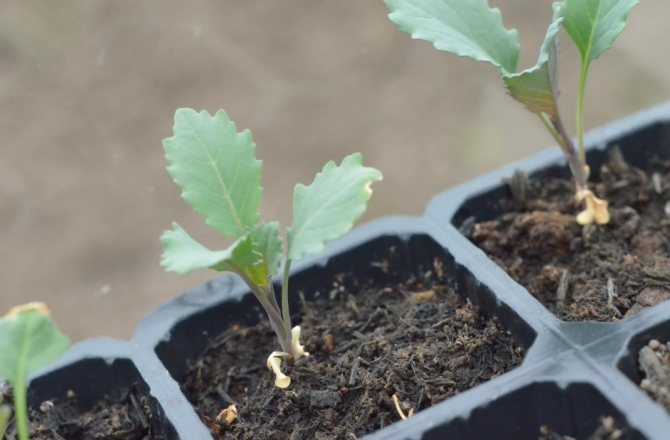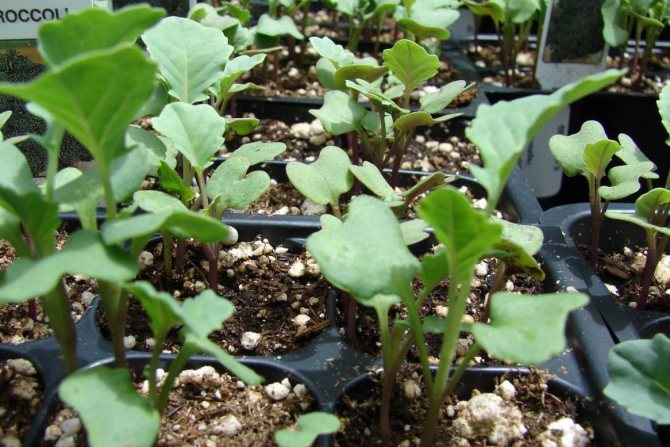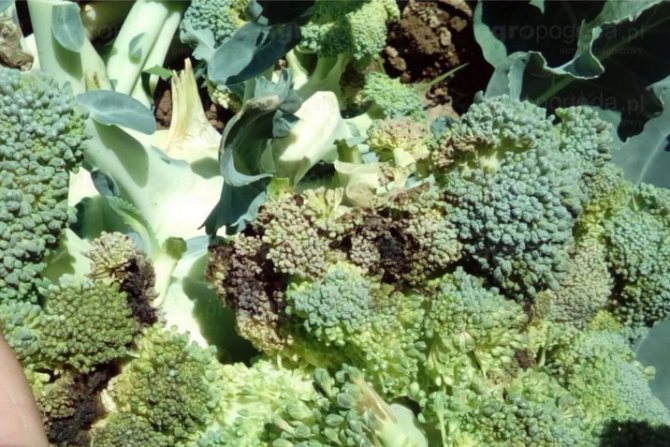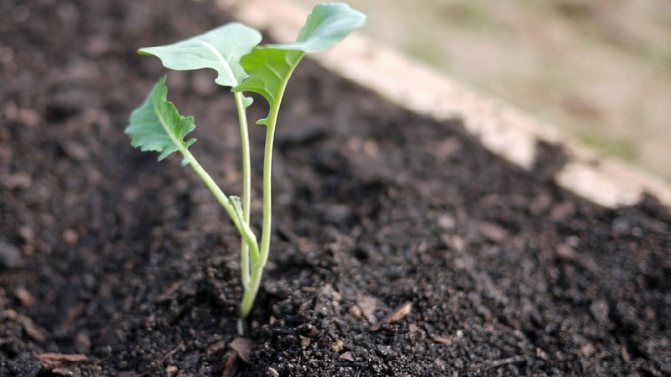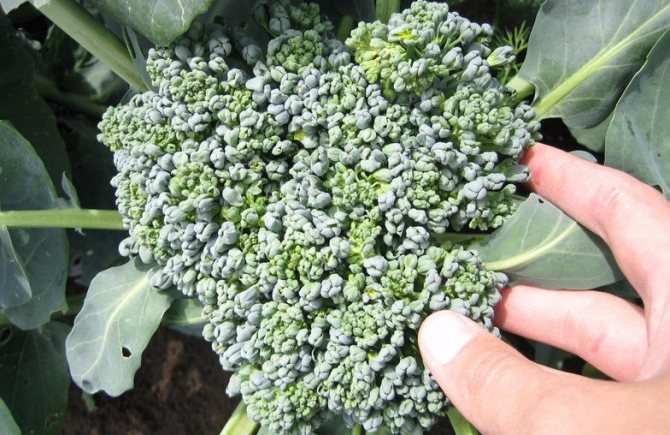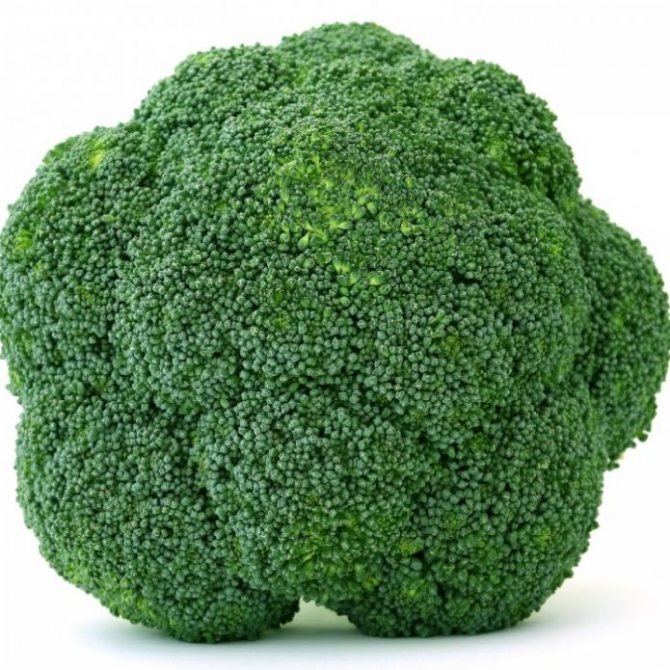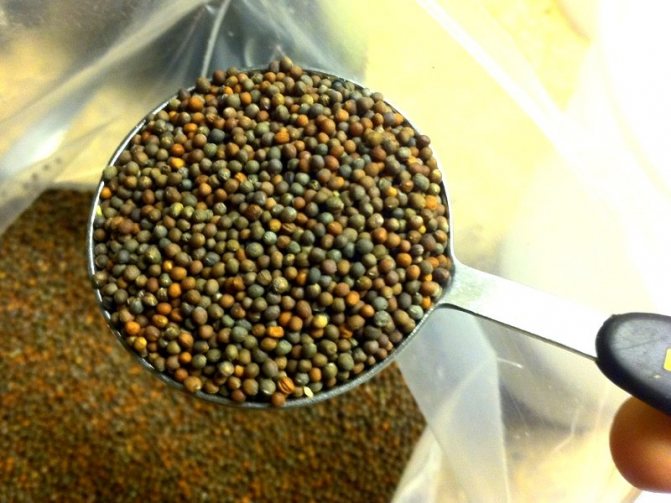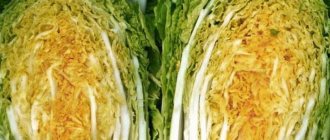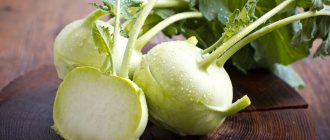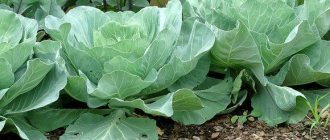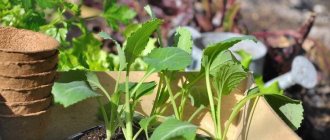The beneficial composition of broccoli
There is written evidence that already in ancient Rome this vegetable was used for medicinal nutrition and was considered "a cure for 100 diseases." The roster is really impressive:
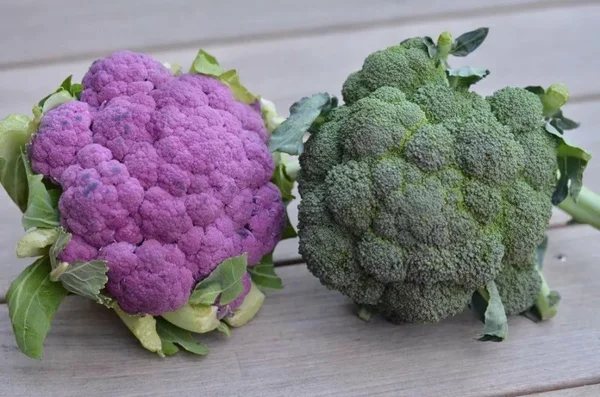
Purple and Plain Broccoli
- Vitamins, carotene, amino acids, flavonoids, minerals, organic acids, phytoncides (inhibit the growth of fungi, viruses and bacteria).
- By content vitamin C broccoli even surpassed lemon and orange.
- Contains coarse fibergood for the intestines. Broccoli contains more protein than other vegetables.
- Vitamin A lives right in every cell of broccoli, and in fact it is very important for health, beauty and good vision.
- Amazing and very rare vitamin U, have you heard of this? Contains a lot in asparagus and broccoli. Small in beets, spinach and celery. It is useful as an antihistamine, regulates acidity, and is very useful for stomach ulcers.
- Sulforaphane (sulfur-containing compound) - antioxidant, immunostimulant. It binds and removes free radicals from the body, and it is they that provoke many diseases and cell aging.
- It also contains indole-3-carbinol - a rare compound that fights all types of cancerous tumors.


It makes an impression ... Shall we grow broccoli?
The benefits of cabbage
Broccoli is rich in content of a large amount of substances valuable to humans. The protein in this vegetable is rich in amino acids, which support the normal functioning of the body and prevent the development of various diseases, atherosclerosis, for example. This protein does not contain cholesterol.
Broccoli contains a lot of fiber, fat, trace elements. This cabbage is a carrier of vitamins, especially "C". To maintain youth and beauty, broccoli is simply irreplaceable, since it contains a large amount of beta-carotene.


Broccoli cabbage, the properties of which are beneficial to the body, removes accumulated cholesterol, prevents the appearance of cancer cells, diseases of the nerves, heart, blood vessels, gastrointestinal tract, and normalizes metabolism. Cabbage is recommended for people with poor health, diabetes, pregnant women, children and the elderly.
Scientists have recently learned that regular consumption of broccoli is an excellent way to prevent cancer. In the composition of cabbage, a substance was isolated that prevents the development of cancer and stomach ulcers.
Predecessors and neighbors of broccoli
Broccoli is a subspecies of cauliflower, only inflorescences (unopened buds) are used. Cabbage is green and sometimes purple.
Crop rotation - this is a set of holy rules for every gardener!
| Best predecessors | Best neighbors |
|
|
On a note! To get a rich and healthy crop of broccoli in your garden, you should not plant cabbage in the same place where other cruciferous crops used to grow.
| Bad predecessors | Bad neighbors |
|
|
Good neighbors in the beds will scare away harmful insects and contribute to pollination, and bad neighbors will "exhaust the nerves", and all diseases from the nerves. This vegetable is quickly pollinated by cruciferous weeds: shepherd's purse, common rape. In this case, regular weeding will help.
Site selection and soil preparation
Broccoli is an unpretentious plant, but it has preferences. This Mediterranean visitor loves well-lit areas; in the shade, cabbage does not grow well, gives small heads. It takes root well on neutral and slightly alkaline soil. Preparation should begin in the fall, if you already know where to plant broccoli next year, then:
- Ash of good quality (after wood, no coal or plastic), dolomite flour, lime, something from this row is introduced into the soil, then dug up, adding humus.
- Suppose they did not prepare the ground in the fall, then a month before planting the seedlings, the soil is limed.
- Immediately before planting, the beds are fertilized with well-rotted compost or rotted manure, 1 bucket per 1 sq. m.


Broccoli in the garden
Cleaning
After the expiration of 2-3 months, inflorescences begin to appear in the center of the bush, which are eaten. They should be green, without blooming flowers, dense. If the inflorescence has become loose or bloomed, it means that the plant is already overripe and will not be suitable for any dish.
After cutting off the central head, do not forget to fertilize, then the side shoots will form, you will get a second wave of the harvest, so do not rush to clear the garden in the middle of the season.
It is better to cut the inflorescences in the early morning, when they contain the maximum amount of water. During the day, broccoli dries up and becomes covered with dust.
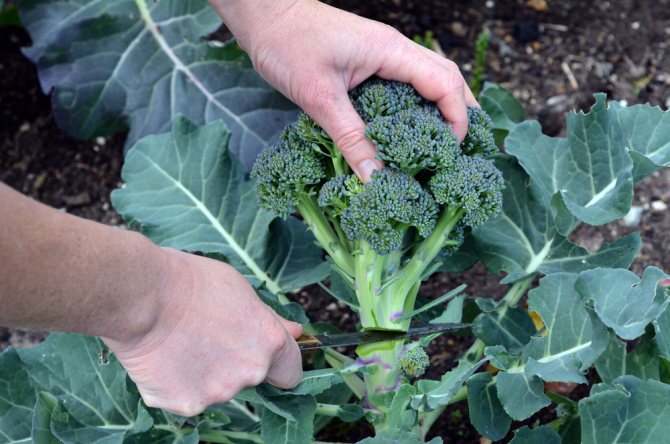

Broccoli variety selection and seed treatment
The time when broccoli ripens depends on the type of cultivar:
- early,
- mid-season,
- late varieties.
Early varieties cabbage ripens after 2 - 2.5 months:
- Variety Linda - large head size, weight up to 0.5 kg. With proper agricultural technology, it gives a second harvest in the summer.
- Variety Vitamin - ripens 70-80 days after planting. Fork weight 300-400 gr. Suitable for growing in Siberia and the Urals.
- Variety Lord F1 - high yielding with excellent qualities. The head weighs up to 1.5 kg. Ripening period 2-2.5 months. Like many hybrids, it is resistant to diseases, in this case to powdery mildew. Grows well outdoors. Productivity is 4-5 kg from plantings of 1 sq.m.
- Variety Corvette - one of the best varieties. The "fitter" grows in any conditions, on any soil. Has a large head weighing up to 1 kg.
Variety "Corvette"
To enjoy the harvest all summer long, they plant and mid-season varieties:
- Variety Calabrese - this is probably the most popular variety in the territory of the Russian Federation. Excellent yield, head weight 400-500 g turquoise. The head of cabbage ripens in 90 days. Grows well in cold weather.
- Variety Gnome - the name in this case does not say anything, the weight of the fork is 400-500 gr. The ripening time is 80-90 days, subject to the cultivation technology, the crop is well stored, suitable for freezing.
- Variety Senshi - a fairly tall bush. It takes 100 days to mature. The head of cabbage is large, up to 1 kg, dark green, elastic, good and long-term storage.
- Variety Ironman F1 - a productive hybrid, resistant to fungal diseases. From 1 sq.m. comes out about 3 kg of dark green heads.
there is late varieties, ripening period (from planting seeds to harvest) is about 135-140 days. Good and long-term storage.
- Variety Marathon F1 - cold-resistant, which means it is suitable for cultivation in Siberia, the Urals, in the northern regions of Russia. Fruit weight from 0.8 to 1 kg. The hybrid is resistant to parasites and pests.
- Variety Continental - this variety has a large, dense head, weight 500-600 gr. Has a pleasant, delicate taste.
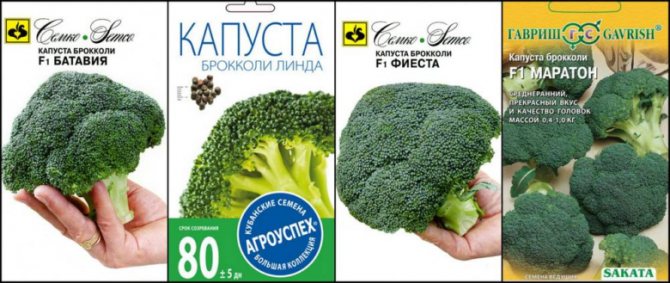

Popular varieties of broccoli
There are special varieties for cold climates:
- Variety Romanesco - he has an amazingly beautiful and unusual look. The head is similar to sea coral, weighing up to 0.8 kg. Ready in 90 days.
- Variety Tone - an early ripe type of cabbage, ready for use 2-2.5 months after planting in the ground. The head is small, only 200-300 g, but has a wonderful delicate, sweetish taste.
Variety "Romanesco"
It all starts with seeds, healthy ones will give good seedlings, and therefore a harvest. A small test: cover the seeds with water, remove the floating ones, they are not suitable for planting. Seed treatment process:
- Arrange a hardening procedure for the seeds. Soak in warm water for 20-30 minutes (50 degrees), then in cold water for 5 minutes.
- You can disinfect as follows: prepare a solution of 1 g of manganese + 0.5 g of boric acid + a growth stimulator. Soak seeds for 5-6 hours.
- Rinse with water and refrigerate for 24 hours.
- The dried seeds are ready for planting.
Varietal variety
Broccoli is an unpretentious culture. It is not difficult to grow it, the main thing is to follow the rules of agricultural technology. This culture is resistant to cold weather and damage by pests and diseases. With the right choice of the variety, it is grown in the south, in the regions of the middle lane and the Urals. By division into varieties and hybrids, broccoli is the record holder among the cultures of the species. There are 200 varieties of this cabbage in total.
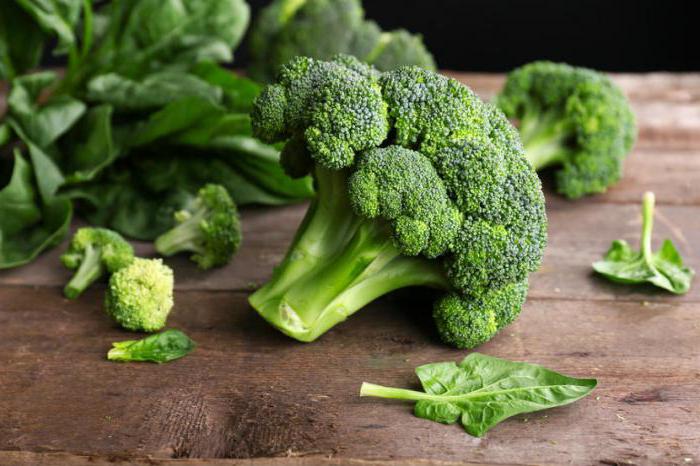

All varieties of broccoli and its hybrids are well transported without compromising appearance. After cutting, their color remains unchanged for a long time. The storage time without loss of quality is long.
Sowing dates for seedlings and soil
Since there are 3 types of cabbage varieties: early, mid-ripening and late, then the timing of planting seeds for seedlings and in the ground is also different. On a pack of seeds, there must be detailed instructions on how and when to plant broccoli of this variety for seedlings. But we will also look at this topic.
A vegetable grows more successfully when the air temperature ranges from 5-20 degrees. Broccoli loves abundant sun, but at the same time grows better in cooler weather.
The timing of planting seeds for seedlings also depends on when you plan to cut the broccoli:
- to get an early harvest, seeds are sown in the second half of February
- for harvest by mid-summer, seeds are sown in May
- for the September collection - landing in early June
Planting broccoli outdoors:
- early varieties are ready for planting in April
- mid-season - in June
- late varieties of cabbage are planted in early to mid-July.
Seedlings are ready for the "great migration"
Outdoor cultivation
There are two ways to grow broccoli outdoors:
- seeds,
- through seedlings.
Sowing seeds
In warm, southern areas, broccoli can be grown outdoors without seedlings. Seeds are sown in late April, in early May, when the soil warms up. If there is still a slight cold snap for the seeds at night, it does not matter.
It is necessary to prepare the ground before planting:
- Dig up,
- Pour well with a steep solution of potassium permanganate,
- After drying, pour Fitosporin (a microbiological preparation against bacterial and fungal diseases),
- Add ash, mix thoroughly, level.
Requires preparation and seeds:
- Soak in water, floating seeds are not suitable, they are empty.
- Soak the rest in a growth stimulator for about a day.
On a note! Like other vegetables, broccoli seeds are sold, already treated with fungicides, growth stimulants and coated with paint, such seeds are planted immediately.
The seeds are buried to a depth of no more than 1 cm, 2-3 pieces at a distance that depends on the variety, the larger the fruit, the wider the planting. The beds are covered with plastic wrap or plastic bottles.
After germination, weak shoots are removed.
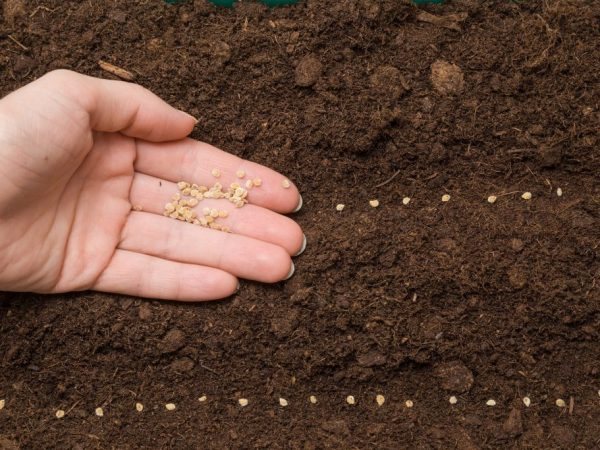

Sowing seeds in open ground
Through seedlings
If you live in the northern regions of the Russian Federation or in the Urals, it is more effective to plant seedlings first.In this case, the first harvest will be in early summer.
Before planting broccoli for seedlings, prepare the seeds:
- The largest ones are chosen, placed in warm water at 50 degrees (20 minutes), then in cold water (5-10 minutes).
- The next step is to stand in a boric acid solution,
- Dry well, the seeds are ready for sowing.
Any soil, purchased or from your own garden, is disinfected:
- Spill boiling water
- Wrap with cellophane and leave to cool.
- Alternatively, you can use a strong solution of potassium permanganate.
Drainage (coarse sand, shells, expanded clay) is poured at the bottom of the box, followed by a soil of about 10 cm. Seeds are sown to a depth of 1-1.5 cm every 5-6 cm. The boxes are covered with glass or foil. The best place is on the windowsill, light and not hot. Seedlings appear in 7-8 days.
High air temperature is undesirable for broccoli seedlings, the seedlings will be too elongated. Weak seedlings are removed. Be sure to feed with a complex of mineral fertilizers. 10 days before transplanting broccoli into open ground, the seedlings are hardened in cool air.
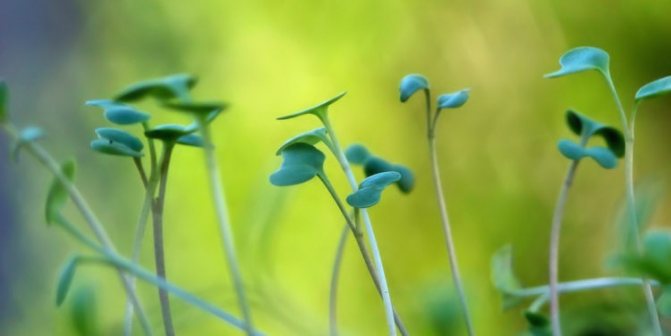

Broccoli seedlings
Planting seedlings in the ground
When 6 leaves have appeared on the seedlings, it is ready for transplanting into open ground. It is better to plant broccoli outdoors in the evening or in cloudy weather (like most other plants and vegetables). The sprout is deepened to the entire stem, only leaves remain on top.
Attention! do not cover the growth point of a young seedling, otherwise it may die
Add compost or mineral fertilizers to the beds, water and mulch the seedlings well. A sure way to get a great harvest is to grow broccoli in a greenhouse.
- Early varieties are planted in late April to mid-May.
- Mid-season varieties are planted in early to mid-June.
- The late variety reaches the garden in early July.
How to sow broccoli cabbage
Disembarkation
By the time of "moving", the seedlings should have 3 - 5 leaves. This time comes in mid-May, but if night temperatures still fall below zero, it is better to postpone planting, despite the fact that seasoned broccoli can withstand -7 degrees.
Broccoli will be happy with the lighted beds of your site, but you need to plant it on a cloudy day, preferably in the evening. Take care of carefully sheltering the plants from the winds. If you can't wait to move the seedlings outside, study the wind rose in your area and install a small fence, provided that it does not interfere with the passage of sunlight. Mainly, this method gets rid of the northern air currents.
Try to remember what grew here last year. Cabbage, tomatoes, beets will spoil the broccoli crop, and cucumbers, carrots, onions, on the contrary, will warn against the development of diseases.
Reference! Create a small notebook where every year you will mark the plan for planting annual plants and think it over in advance.
- It is advisable to dig up the soil in the fall, add manure, lime (with increased acidity). If you decide to start growing broccoli only in the spring, use ash and humus, then add saltpeter at the seedling stage.
- Dig long, parallel furrows 40 cm apart. Take your time: completely prepare the place for further work: loosen the soil, trample or fill the paths between the beds, otherwise in the summer after rainy days you will not find your harvest.
- It is better to plant plants farther away: about 70 cm. You can remove cabbage from a glass only with a lump of earth or a peat pot. Set it to a depth of 7 cm so that the plant does not fall over, but does not submerge its leaves in the soil.
- Sprinkle the soil at the roots with stones, foliage, bark. Mulching not only maintains an optimal low temperature at the roots: it prevents moisture evaporation, light access for weeds, and repels pathogens and garden pests. It has long been proven: vegetables on mulch soil give more root appendages.
- Choose pest-free bark for mulch, and the grass should be cut recently. It is recommended to use hay, lawn crops, but not dead weeds.
- The modern method of mulching is agrofibre, which is a dense black film with holes made in it for cultivated plants. The dark color retains heat well at the roots and protects weeds from sunlight - does not allow them to grow. In greenhouses, the film prevents water evaporation and an increase in air humidity, protects against rodents: mice, moles.
- Pour warm water over the beds.
If you are growing broccoli from seed from the greenhouse or greenhouse stage made of polyethylene or non-woven fabrics, follow these same guidelines. Be sure to thin out the beds or the broccoli will get cramped during the summer season.
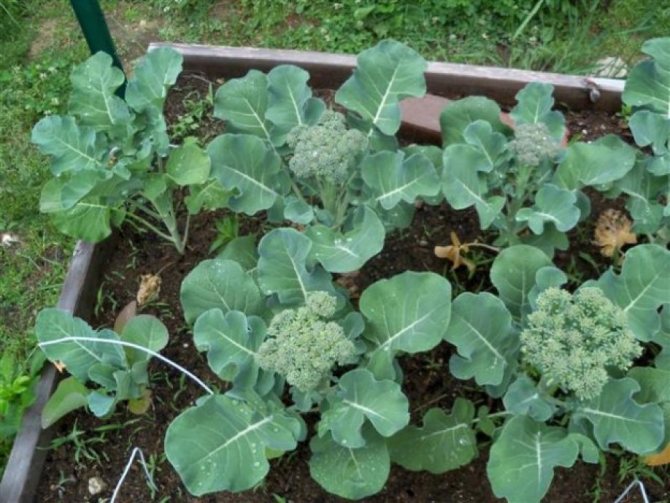

Care
Growing and caring for broccoli on your own is no more difficult than growing ordinary white cabbage, but it is important to follow the basic rules of care.
Watering and mulching
Like any other broccoli cabbage loves moisture, then the vegetable grows quickly, tying large heads. Regular watering in hot weather, under the root. Ideal, settled, warm water. Many have tanks and barrels for these purposes in their gardens or dachas. Excessive moisture causes fungal diseases. The problem will be solved by mulching the beds. It will not be superfluous to build high beds for good drainage, and plant seedlings on the ridge of such a bed.


Broccoli loves moisture
Chips, needles, sawdust, straw or hay, cones, small leaves, everything will come down to create a protective layer - mulch... This layer protects the soil from overheating and hypothermia, i.e. works like an air conditioner. Keeps excess moisture in itself, preventing the roots from rotting. It also protects against harmful insects, promotes the reproduction and development of beneficial microorganisms in the soil. Effectively limits the activity of weeds.
Weeding and loosening
Broccoli care is easy. A prerequisite for the ripening of a rich harvest of all crops, without exception, is weeding and loosening. If the soil is mulched, you can do without loosening, but this will not save you radically from weeds. Only the old old-fashioned way, that is, with the help of hands, can you get rid of harmful plants. Alternatively, use a black non-woven covering material for gardening purposes. The price stops, but it's a good investment that will pay off quickly. The material will last for several years.
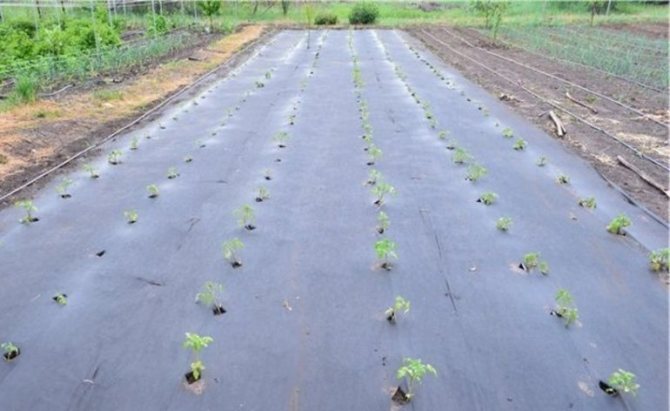

The use of covering material in the garden
Top dressing
Each garden plant requires fertilizing, organic or mineral, for abundant fruiting. Better to alternate these methods.
Likes to feed and broccoli.
- First time we feed the seedlings a week after planting. Solution: 2 tablespoons of urea in a bucket of water.
- Second time in 14-15 days. A little cow dung per 10 liters of water, stand for a day or two, carefully pour under the root.
- Third timewhen the inflorescences are already forming. Dissolve 2 tablespoons of superphosphate in 10 liters of water, this should be enough for 10-12 plants.
- Fourth timewhen the main head was cut off. Broccoli bush can produce several harvests over the summer. Top dressing with phosphorus-potassium fertilizers will give the plant a second life.
According to the condition of the cabbage, you can find out which minerals are lacking in the soil.
- If the bush grows poorly, the lower leaves turn yellow, then there is not enough nitrogen.
- If the heads of cabbage grow unevenly, they are divided into inflorescences. The leaves change color, the edges dry out - there is not enough potassium.
Using your knowledge, you can save and multiply the harvest.


Mineral fertilizers for the garden
Protection against diseases and pests
The beloved broccoli cabbage is quite resistant to diseases and pests. Compliance with the rules of agricultural technology is the prevention of many diseases:
- Crop rotation rules,
- Disinfection of seeds,
- Soil preparation for planting, liming,
- Moderate watering and mulching,
- Weeding and loosening the soil,
- Application of mineral and organic fertilizers.
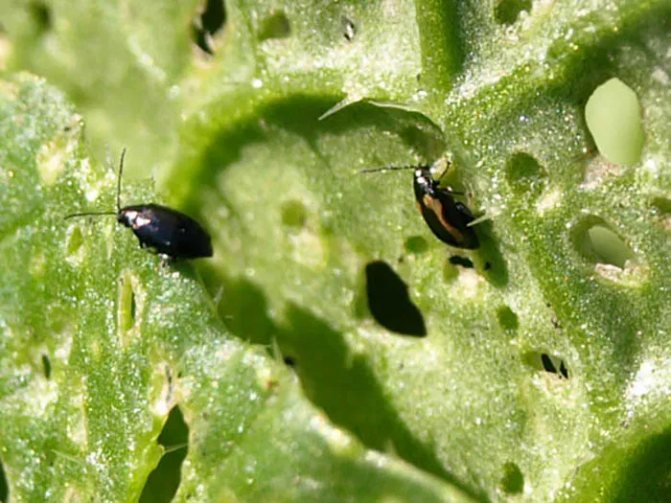

Cabbage lovers cruciferous fleas
To help the gardener, fungicidal plants, insects do not tolerate strong odors.
- Fragrant dill repels cabbage aphids.
- Whitefish and cruciferous fleas do not like celery.
- Peppermint, calendula will ward off the whitefly.
- Marigolds and tansy with a pungent smell will scare cabbage caterpillars.
For active preventive control, infusions from nightshade tops with the addition of red pepper are suitable. Processing is carried out in the evening when the sun went down. Spraying is carried out for the first time 7-10 days after planting the seedlings. Repeat every 2 weeks, especially after rains. If, nevertheless, insects overcome, use chemicals, the choice of fungicides is great.
Important: Do not use chemicals later than 15-20 days before the ovary of the inflorescences.
And yet there is a chance that trouble will not pass by. Fungal disease is dangerous for seedlings - black leg. The affected stem becomes thinner, breaks, or rots. All seedlings can die in a few days. Sick plants must be removed, the rest must be treated with Rizoplan. After 10 days, repeat the treatment. There are other diseases as well:
- powdery mildew,
- keel,
- white rot,
- white rust.
These diseases affect broccoli much less frequently than other cabbage crops. If the soil and seeds are properly cultivated, and the beds are looked after correctly, then there is practically nothing to be afraid of.
Watering
Broccoli is an unpretentious crop. Cultivation and care, regardless of the timing of planting, is carried out in compliance with all the rules. The vegetable is sensitive to moisture, so you need to observe the frequency and rate of watering. If the plant does not have enough water, the heads with inflorescences will grow small in size, and their taste will be specific.
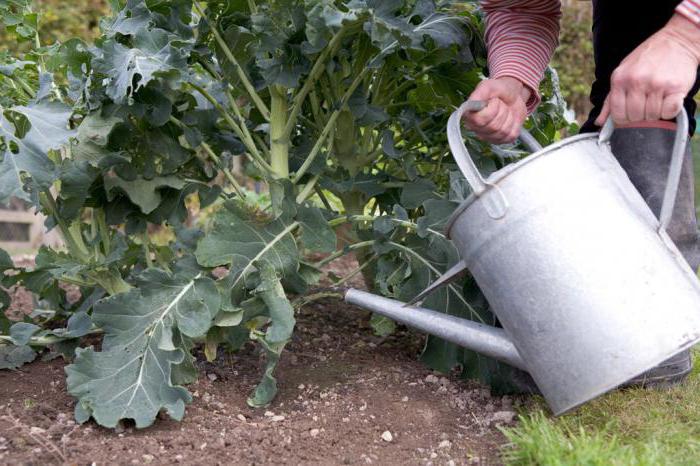

Watering should be done in the morning, before the sun has risen, or in the evening, when it has already set. If the sun's rays hit the wet broccoli leaves, the plant will get burned. In the post-planting period, cabbage is watered as needed, but always once a week.
In the future, the vegetable is watered several times a week, and in dry weather - every day, since drying out and cracking of the soil is not comfortable growing conditions for broccoli. Humid air is of great benefit to the plant, for which it is advisable to place containers filled with water next to the beds. They don't need to be made tall and wide. Air humidification can be achieved by spraying cabbage using a spray bottle.

